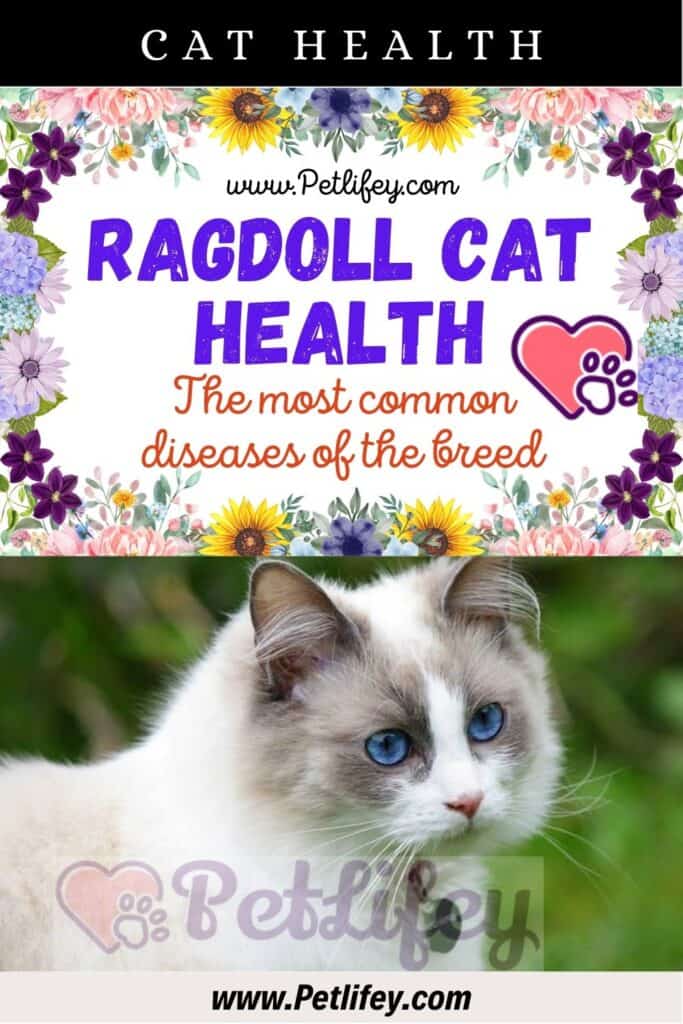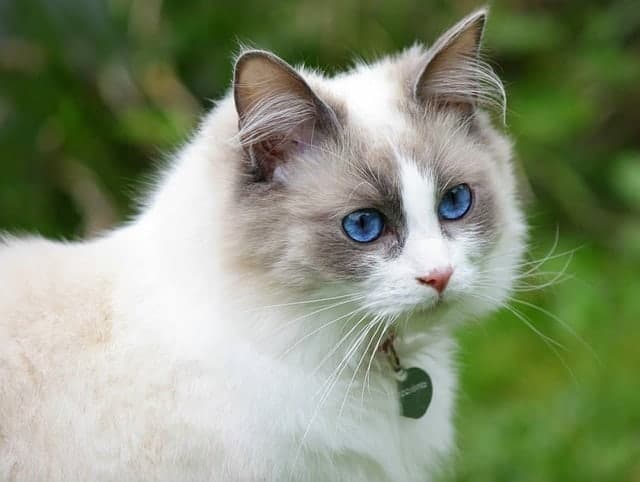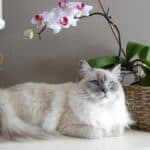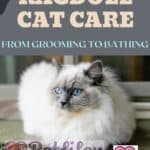Ragdoll diseases, the most common pathologies in this exotic cat breed. Let’s find out together which ones can hit him.

Even before the Ragdoll kitten arrives in our home, it is advisable to try to understand and learn more about the breed that you have decided to adopt.
This is why in the next paragraphs you will find everything you need to know about Ragdoll diseases, the most common pathologies of this cat breed.
Diseases of the Ragdoll

The Ragdoll is the cat that everyone would like as they are extraordinarily docile, calm and tender.
This cat breed loves being in the company of its human family, snuggled up on the sofa with its owner.
This is a positive note as it will allow us to monitor his health, being able to observe him closely for a long time.
The Ragdoll is a medium-large sized cat: females weigh up to 6.5 kg, males up to 9.5 kg.
Gifted with a lean build and an elegant bearing, but imposing, muscular and massive.
Despite this robust physicality, it is subject to some specific pathologies of the breed, namely :
- Hypertrophic cardiomyopathy : this problem tends to occur in cats aged 4 to 7 and has a familial origin due to one or more mutations of a gene. This is the thickening of the ventricular wall in the cat’s heart.
- In order to diagnose hypertrophic cardiomyopathy, it is important to rule out other causes of thickening (hypertrophy) of the heart muscle, such as chronic hypertension, hyperthyroidism and aortic valve stenosis. The diagnosis that the vet will have to make is quite complicated as most cats with hypertrophic cardiomyopathy do not have any symptoms. That is why the doctor will have to perform an echocardiography in order to be able to observe the structure and dynamic function of the heart. Regarding the treatment, the primary disease will have to be addressed, which will probably lead to the resolution of the heart conditions.
- Obesity and diabetes: precisely because of this massive and muscular physicality, the Ragdoll must follow a suitable diet, otherwise it may find itself in a critical situation concerning obesity in cats. Furthermore, this breed needs daily physical exercise and it is good to provide them with different toys to interact with (for example: scratching posts for cats and high shelves to climb).
- Total intestinal obstruction is often caused by hairballs that form in the cat’s stomach and get stuck in the small intestine when their size gets too large. It can also be caused by ingesting a foreign body (a bone, rag, sponge, piece of plastic, string, or ball) that cannot pass through the intestine. In the case of partial intestinal obstruction , there is an incomplete obstruction of the digestive tract, i.e., intestinal transit is significantly slowed down but is still achieved. This is referred to as intestinal sub occlusion. Treatment involves surgery which is usually performed in the case of total intestinal obstruction from gastrostomy.
Furthermore, like all other cats, the Ragdoll can also be subject to diseases typical of domestic cats, such as oral diseases, such as:
- gingivitis in cats : an inflammation of the cat’s gums caused by tartar. In this case, the cat must absolutely be treated, generally with antibiotics;
- periodontitis : this is an infection that reaches the teeth, generating pus that comes out of the gums and that could be ingested by the feline.
- dental resorption : this condition prevents the cat from eating properly and drooling frequently, because the part that covers the tooth is totally worn out;
- absorption of the enamel : the enamel tends to detach and the cat to swallow it. The teeth will look different than usual, with a tendency to have red spots on the tissues.
- feline stomatitis : inflammation of the mucous membrane of the mouth due to the presence of bacteria;
- tartar : bacteria that join with food residues and more, form dental plaque, which can worsen and become tartar;
- carcinoma : is the tumor of the mucous membranes of the mouth. It presents with growths, ulcers and peeling of the tissues. A rather serious conduction where it is possible to try with radiotherapy.






